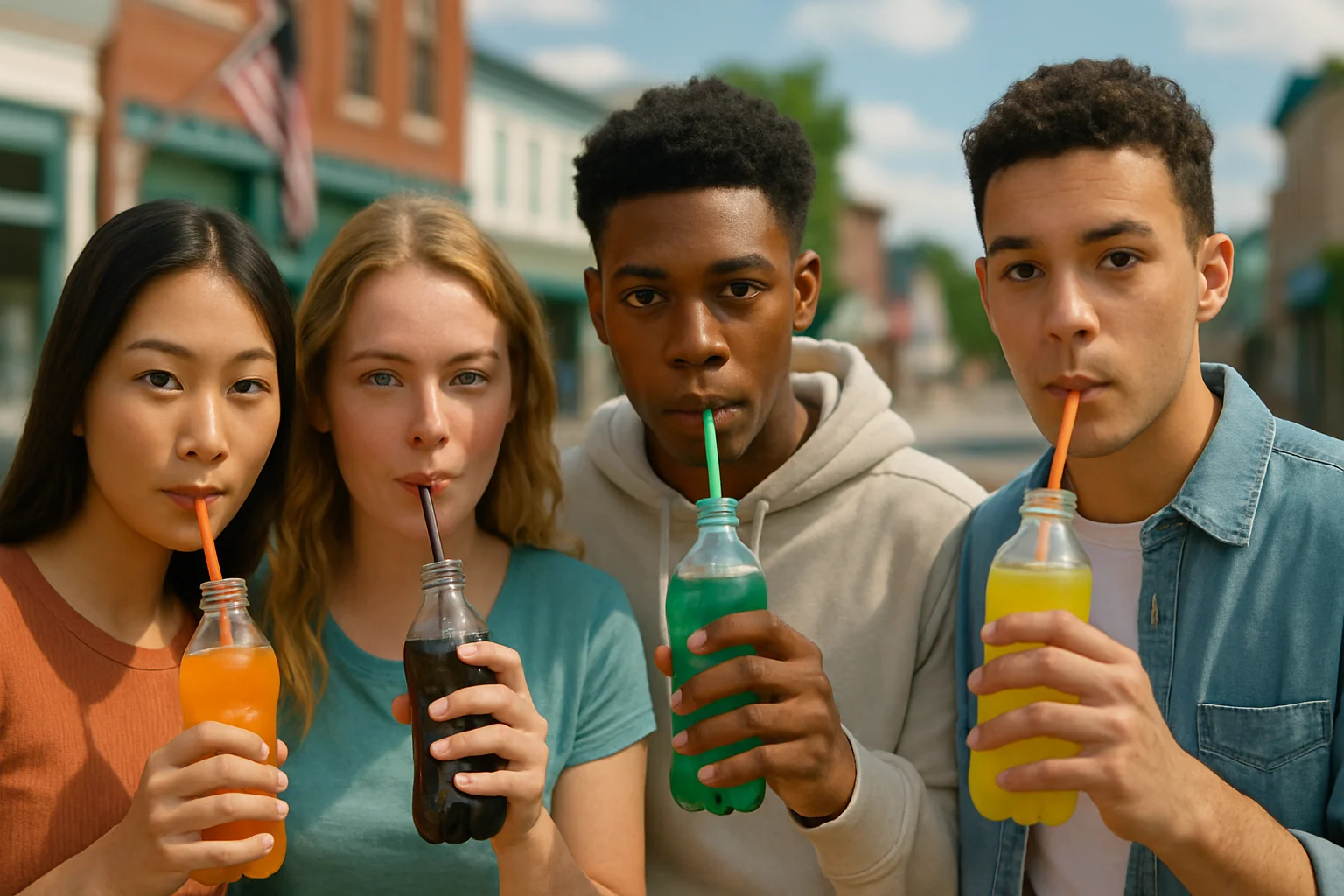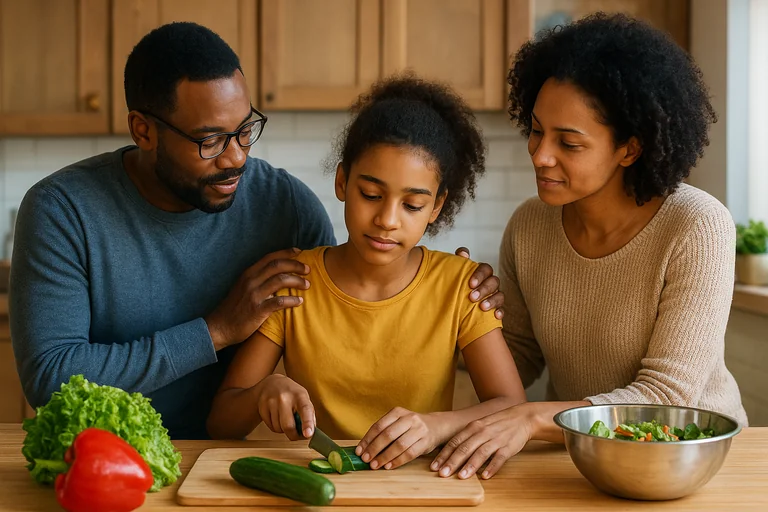A 2 minute assessment to get a personalized mental health or alcohol recovery plan.
Understanding the national trend matters for your own drinking decisions - and knowing how to use the shift in your favor can make cutting back easier.
What You'll Discover:
- Whether Americans really are drinking less in 2025 — and which data sources you can trust
- The difference between per-capita consumption and self-reported drinking (and why it matters)
- Who's driving the decline (teens, young adults, or everyone) — and who's still at high risk
- How the cultural turn toward moderation affects your social environment and options
- Practical strategies to ride the national trend downward if you want to drink less
- What the research says about tools that actually work, including medication-assisted approaches
If you've felt like more friends are doing Dry January, ordering NA beers, or taking month-long breaks, you're not imagining it. In 2025, multiple gold-standard data sets show a real, though nuanced, pullback in U.S. drinking.
The trend isn't uniform across every metric or age group, but the center of gravity is shifting. A record-low share of U.S. adults say they drink, teen drinking has hit historic lows, and per-capita alcohol consumed ticked down in the most recent finalized year. More Americans also believe even moderate drinking is harmful.
All that said, the change follows no straight line or cliff. Post-pandemic drinking patterns are still normalizing, and averages hide pockets of heavy use that still drive most alcohol-related harm. Beyond asking "are Americans drinking less?" the more useful question becomes: what does that shift mean for you personally, and how can you use it?
With that in mind, here's what the latest national surveillance and population polls actually show, who's drinking less (and who isn't), and how to translate the trend into practical strategies, whether your goal is moderation or quitting.
Quick glossary - so we don't talk past each other
Before we dig into the numbers, let's clarify two terms that often get mixed up in headlines.
Per-capita consumption (NIAAA) — This measures gallons of ethanol sold per person aged 14 and older each year. It's objective (drawn from sales and tax records) and reflects total volume in the country. (NIAAA Surveillance Report)
Self-reported drinking (NSDUH, Gallup, YRBS, Monitoring the Future) — These are surveys asking people whether and how they drink. Great for understanding who drinks and how often, less perfect for exact ounces. (SAMHSA)
These aren't the same thing. Sales can dip even if the share of drinkers stays flat (because people drink fewer drinks per occasion). Surveyed "drinkers" can decline even if per-capita ounces don't fall as much (because remaining drinkers might drink more). We'll keep that distinction in play throughout.
What the best sources say - latest available data
Per-capita alcohol consumed: down in 2022 — NIAAA's Surveillance Report #121 (the federal gold standard for sales-based estimates) shows 2.50 gallons of ethanol per capita in 2022, a 1.2% decrease from 2021 (2.53 gallons). Also notable: spirits overtook beer as the top ethanol source for the first time since 1969 — shorthand for "fewer beers, more cocktails." Regionally, the West nudged up, while the South, Midwest, and Northeast dropped. (NIAAA Surveillance Report)
Why this matters: Per-capita dips suggest real reductions in total alcohol volume — not just survey sentiment.
Who identifies as a drinker: also down — sharply — Gallup's 2025 poll reports 54% of U.S. adults now say they drink at all — the lowest share in its time series and down from 62% in 2023. More Americans also believe even moderate drinking is harmful. (Gallup poll)
Why this matters: This captures the cultural turn — a broader rethinking of "normal" drinking.
Teen drinking: historic lows — The CDC's YRBS 2013–2023 report documents decade-long declines in current alcohol use among high school students. Monitoring the Future's 2024 and 2025 updates echo the pattern, with historic low levels across lifetime, past-30-day, and binge drinking for 8th, 10th, and 12th graders. (CDC YRBS report)
Why this matters: Today's teens are forming different baselines and norms around alcohol than Millennials or Gen X did.
Young adults: still high-risk, but shifting — NIAAA's 2024 NSDUH summary indicates young adults (ages 18 to 25) remain a high-intensity group, though trendlines suggest evolving patterns — fewer frequent heavy episodes for some cohorts, more "event-based" drinking for others. (NIAAA young adults data)
Underage drinking: still falling — The 2023 NSDUH highlights show 14.6% of 12- to 20-year-olds used alcohol in the past month, with binge and heavy drinking lower still — evidence the long slide continues. (SAMHSA NSDUH highlights)
Are Americans really drinking less? The nuanced answer
Short answer: Yes, on several consequential measures. The share of U.S. adults who drink is down, youth drinking is way down, and per-capita volume dipped in 2022 (the latest finalized federal year). Put together, that's a meaningful step away from peak norms.
Longer answer: This isn't a straight line.
Post-pandemic rebound effects are still normalizing. Sales surged in 2020 and 2021, then cooled in 2022. The 2023 final per-capita figures aren't fully published yet in NIAAA's standard format, so until they are, 2022 is the last apples-to-apples year we can cite for sales-based national consumption. (NIAAA Surveillance Report)
Substitution within alcohol — more spirits, fewer beers — can mask risk. Cocktails often pack more ethanol per serving than a casual beer. That can keep harms high even if "drinking occasions" feel fewer. (NIAAA Surveillance Report)
Self-reported "I drink" can fall faster than ounces if remaining drinkers consolidate more volume per capita. That said, Gallup's parallel finding — more Americans say any drinking is harmful — supports a genuine normative shift. (Gallup poll)
Bottom line: The arc points down. It may not be a cliff, but it's not just vibes or headlines.
What most articles miss — and we'll cover here
Sales versus surveys aren't the same thing — We'll continuously flag which is which so you interpret headlines correctly.
Risk changes when drink types shift — Spirits overtaking beer changes dose-per-occasion dynamics. A cocktail can deliver twice the ethanol of a light beer, so fewer "drinks" doesn't always mean less risk. (NIAAA Surveillance Report)
Youth declines are profound — and predictive — Today's teen norms shape tomorrow's adult baselines. If current high schoolers are drinking at historic low rates, that affects college patterns, young-adult culture, and eventually middle-age norms. (CDC YRBS report)
"Less" on average doesn't equal safer for you personally — Averages hide heavy-episodic pockets and people who would benefit now from targeted help. Binge drinking still accounts for the vast majority of excessive drinking episodes in the U.S. (SAMHSA NSDUH highlights)
The cultural turn — why now?
Health messaging matured — More people accept that "no level of alcohol is risk-free," aligning with WHO-consistent guidance and decades of epidemiology. Gallup shows a majority now see moderate drinking as harmful. (Gallup poll)
Gen Z norms — Youth data show less frequent alcohol use and a comfort with NA options, "sober-curious" months, and intermittent abstinence. (CDC YRBS report)
Convenience culture — Expanding zero-proof menus and retail NA shelves make cutting back easier and more visible — reducing the old social friction.
What this means for your plan
Even if the nation drinks less, your risk is individual — a function of quantity, pattern (binge versus spread out), age, health, and goals (cut back versus quit).
If you're cutting back (moderation goals) — Start by quantifying your baseline with a two-week log. Most people underestimate units, especially with mixed drinks. Then shift drink type, not just count. If spirits are replacing beer nationally, you can do the opposite: prefer lower-ABV options (or NA) to reduce ethanol per occasion without "fewer glasses." (NIAAA Surveillance Report)
Insert alcohol-free "anchors." Build intermittent sobriety days into your week so resets are routine, not repairs.
Use pharmacologic support when willpower meets physiology. Naltrexone (50 mg oral) taken daily or in targeted fashion (The Sinclair Method) reduces the rewarding feedback loop — making "just one or two" actually achievable for many.
If you're considering abstinence — Run a safety check first. If you've been drinking heavily or frequently, medically supervised taper or detox may be safer than abrupt cessation.
Stack supports: medication (like naltrexone), coaching or therapy, and a relapse-prevention plan for high-risk cues (time of day, settings, stressors).
Expect a two- to six-week neurobehavioral lag. Sleep, energy, and mood often improve stepwise, not overnight — normalizing expectations helps you stick with it.
Where the risks remain — even if "nationally down"
Binge drinking is still the dominant pattern — It accounts for the vast majority of excessive drinking episodes in the U.S. That means intensity spikes can drive harm even as average volume falls. (CDC excessive drinking data)
Young adults retain high-intensity risk pockets — Especially in social clusters (Greek life, service industry, nightlife). Tailored strategies and environmental design (availability, pricing, norms) matter. (NIAAA young adults data)
How to leverage the trend personally — seven practical moves
Define your "why" in concrete terms — Sleep efficiency, anxiety scores, training goals, liver enzymes. Vague goals drift.
Choose your lever — You can reduce frequency (fewer days), dose (smaller pours or lower ABV), or reinforcement (block the reward with naltrexone).
Front-load alternatives — Stock NA beers and spirits, and mix zero-proof drinks you actually like. (If you need inspiration: The ultimate guide to non-alcoholic cocktails and mocktails)
Shift contexts — Most binges are contextual. Change the place or time to change the pattern.
Track cravings versus consumption — They don't always move together. Naltrexone often reduces craving intensity first; consumption follows as habits adjust.
Use intermittent sobriety as a maintenance tactic — Not just a challenge month. Build alcohol-free days into your routine so resets become normal.
Review monthly — If you're not trending toward your target, escalate the plan (add medication, more touchpoints, different accountability).
Data-driven FAQs
"If per-capita consumption fell in 2022, does that mean alcohol harms fell too?" — Not automatically. Harm is driven by how much and how people drink: episodes of heavy drinking, drink strength, driving, co-use (like sedatives), and comorbid health states. Still, volume declines are broadly positive — less ethanol in circulation tends to mean fewer opportunities for high-risk dosing. (NIAAA Surveillance Report)
"Are teens really drinking less, or just reporting less?" — Youth surveillance draws from multiple independent instruments (CDC YRBS, University of Michigan's Monitoring the Future). Their converging declines — over a full decade — strongly suggest real change in behavior, not just response bias. (CDC YRBS report)
"What about young adults?" — They remain a higher-risk group for heavy patterns, but there are signs of attitude change and greater experimentation with moderation and sober periods, especially as NA options and wellness culture widen. (NIAAA young adults data)
"So... are Americans drinking less alcohol?" — Yes — directionally — on the most recent high-quality indicators. A record-low share of adults identify as drinkers (Gallup), teen drinking is at historic lows (CDC and NIDA), and per-capita ethanol consumed fell in 2022 (NIAAA). The scale isn't seismic, but the trend is real and actionable. (Gallup poll)
Evidence snapshots — so you can cite them too
NIAAA Surveillance #121 (1977–2022) — U.S. per-capita ethanol 2.50 gallons in 2022 (down 1.2% versus 2021); spirits exceeded beer for the first time since 1969. (NIAAA Surveillance Report)
Gallup 2025 — 54% of adults say they drink (record low in series); rising belief that any drinking is harmful. (Gallup poll)
CDC YRBS 2013–2023 — Decade-long declines in current alcohol use among high schoolers. (CDC YRBS report)
Monitoring the Future 2024 and 2025 — Historic lows across youth alcohol metrics. (Monitoring the Future report)
NSDUH 2023 highlights — Underage past-month alcohol use 14.6%; binge and heavy use lower still. (SAMHSA NSDUH highlights)
If you want to drink less, here's what actually helps — fastest-working tools first
Naltrexone (50 mg oral) — What it does: Blocks opioid receptors, blunting alcohol's "reward," which reduces cravings and the urge to keep drinking. How fast: Many people notice meaningful change in days to weeks as reinforcement weakens.
How to use: Daily dosing for all-day coverage (great if you might drink any day), or targeted dosing (The Sinclair Method) where you take it before any planned drinking to decondition the cue-reward loop over time.
Why it's popular now: It supports harm reduction with or without full abstinence, fitting the cultural trend toward intentional, lower-risk drinking.
Structured behavior change — A two-lever plan (reduce frequency plus reduce dose) beats vague "drink less" goals. Replace rituals with the same glass, an NA drink, and similar wind-down cues.
Community and accountability — Short, regular check-ins (group or one-on-one) double as relapse prevention by catching drift early.
Environment design — Keep lower-ABV and NA options visible. Keep high-strength spirits out of everyday reach.
Want recipes and techniques to make NA drinking feel like a treat (not a trade-down)? Try our guide to non-alcoholic cocktails and mocktails.
Common roadblocks — and how to beat them
"My social life revolves around drinks." — Swap context, not friends. Suggest coffee walks, late-afternoon workouts, or NA-friendly spots. Bring NA beers to parties — most hosts are relieved.
"Cravings hit at 5 to 8 p.m." — Use naltrexone earlier in the day (daily or targeted depending on your plan), pair with protein plus hydration at 4 p.m., and set a non-alcohol ritual at the trigger time.
"I can't fall asleep without a nightcap." — Alcohol fragments sleep. Transition to sleep-positive anchors (magnesium glycinate, reading lamp routine, warm shower) and give it two to three weeks. Many people see deeper sleep once the rebound insomnia phase passes.
"I'm fine all week, then overdo it on weekends." — Pre-commit to a hard stop time and a ride home from a non-bar setting. If you drink, targeted naltrexone goes on the calendar before the night out.
The state of drinking in America — clear takeaways
The country is (slowly) moving your way if you're exploring moderation or abstinence. You don't need to wait for perfect willpower. Medication-assisted strategies like naltrexone make "drinking less" biologically easier by weakening the reinforcement loop. Youth trends are encouraging — which bodes well for future harm reductions at the population level. (CDC YRBS report)
A quiet invitation
If you've been thinking, "I want to drink less, but I'd like help actually doing it," you're the person our program is built for. Choose Your Horizon offers 100% virtual naltrexone care — with a quick medical consult, medication shipped to your door, and weekly free groups — so you can test moderation or move toward alcohol-free living without turning your life upside down.
If you'd like to see whether you're a good fit, start your 3-minute alcohol use assessment here.
References
- NIAAA Surveillance Report #121 (1977–2022) — Apparent per-capita ethanol consumption (sales-based). https://www.niaaa.nih.gov/publications/surveillance-reports/surveillance121
- Gallup (August 13, 2025) — U.S. drinking rate at modern low; risk perception rising. https://news.gallup.com/poll/693362/drinking-rate-new-low-alcohol-concerns-surge.aspx
- CDC YRBS 2013–2023 Data Summary & Trends — Teen substance use declines. https://www.cdc.gov/yrbs/dstr/pdf/YRBS-2023-Data-Summary-Trend-Report.pdf
- Monitoring the Future 2024 and 2025 (NIH/NIDA) — Historic lows in youth alcohol metrics. https://monitoringthefuture.org/wp-content/uploads/2024/12/mtf2025.pdf
- NSDUH 2023 Highlights (SAMHSA) — Underage past-month alcohol use and binge/heavy estimates. https://www.samhsa.gov/data/sites/default/files/NSDUH 2023 Annual Release/2023-nsduh-main-highlights.pdf
- NIAAA — Alcohol and Young Adults Ages 18 to 25. https://www.niaaa.nih.gov/alcohols-effects-health/alcohol-topics-z/alcohol-facts-and-statistics/alcohol-and-young-adults-ages-18-25
- CDC — Data on Excessive Alcohol Use. https://www.cdc.gov/alcohol/excessive-drinking-data/index.html




